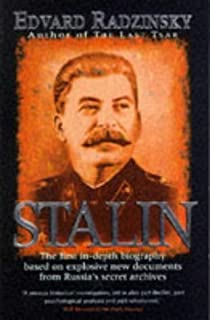Like
most places on the planet, the pandemic has denied us the opportunity of
hearing live music in a hall with volume for several months. Our last concerts
in Alfas del Pi were in the first week of March, so imagine the elation created
by the granting of free tickets by ballot to two restricted-access contemporary
music events in ADDA, Alacante! And imagine the elation produced by the quality
of the experience generated!
In
one of the most original musical evenings of some sixty years of concert-going,
Mario Prisuelo and Maximiliano Sanford offered an evening entitled Oceánica - Un océano no siempre tranquilo…. It was billed as a dance event, but the
program suggested a piano recital. Intrigued, we awaited the start with the
Steinway up against the left edge of the stage. The dancer entered from within
the audience, to a refrain of four notes, slapped with his palms against a bare
chest. He continued as his pianist also took the stage and loosened his formal
tie. And then the concert began with the Opus 34 Preludes of Shostakovich. The four
slaps, clearly, were a toneless version of DSCH, Shostakovich’s musical signature,
indicating the presence of a vulnerable individual, no more, no less.
Mario
Prisuelo’s playing of the Preludes was breathtakingly beautiful. Maximiliano
Sanford danced an interpretation of the music, his ability to leap headfirst
and land silently was beautiful as well as both evocative and unintrusive. The
combination could have failed, could have been overtly pretentious, but in fact
it worked supremely well, the movement complementing and interpreting the
musical shapes. The contrasting allegro and adagio, major and minor being seen
via this inventive choreography as deeply felt emotion, a Romanticism that many
might not associate with the music of Shostakovich.
A
short speech located the whole experience as a voyage to Ithaca, a perfect
destination where an individual can obtain self-realization, despite threats
along the way. Projected text floated across the stage and at no point did it
intrude into the musical space.
At
the end of the piece, the performers advanced the piano across the stage,
probably to signify progress on the journey. Then we heard El Amor y La Muerte,
Love and Death by Granados with a change in choreographic style. The late Romanticism
of Granados might have jarred after the Shostakovich, but in fact the music
sounded almost more contemporary then what went before. It was as if the progress
on the ideal journey generated joy and enthusiasm in the quest, and this
despite the strange foreboding that characterizes this piece, which perhaps signified
some of the dangers that had to be overcome on the way.
Another
piano progress took the instrument to just right of center stage. Our dancer
was probably exhausted by now and spent much of the next piece lying motionless
on the floor. It was apposite because the piece was Shadow by Rebecca Saunders.
We were perhaps at the point in the journey where the endpoint seems to have
receded and all experience seems to oppress, to oppose, to turn to nothing. The
music repeatedly pounded our potential hero into the ground, and he was left
alone.
The
piano progressed again to the right edge of the stage. And the final piece was
a neoclassical-cum-minimalist celebration of rhythm, David del Puerto’s Danza.
It was the achievement of the goal, the end of the journey, but unreflective in
its elation, its apparent rhythmic progress leading eventually to precisely
nowhere. Nowhere, that is, except a return to the realization that whatever
goal we set ourselves, we begin as an individual and complete our task as that
same individual, still vulnerable, still putting out those four tones on our bare
chest, DSCH, me, just me. Nothing more. What a superbly thought out and
presented experience this was.
That
was Saturday evening and, at lunchtime on Sunday, we were two rows back in the same
hall at ADDA in Alicante for a performance by Ars Musicandum, a saxophone
quartet. What was intriguing about this concert was its presentation of a
programme of music by composers who were all from the same small town, Rafal,
population 4500, south of Alicante.
We
began with a Romantic Quartet by Agustin Bertomeu, born 1928. Written in a
pre-dominantly neo-classical style, it mixed rhythmic exploration and clear
lines with occasional harmonic clashes.
Next
was Subreptos by Sixto Herrero, who is the soprano player and spokesperson for
the band. This was a piece written in neo-primitive style, where line and
harmony were not the goals. The four saxophones visited the droning horns of
Tibetan temple music, the sung-through mumbling of Australian didgeridoos, the
sounds and occasionally timeless meandering of the Japanese flute. I am sure
there were more influences as well. Overall, the primitivism reminded us of how
foreign and utterly strange this imagined, but still utterly human sound world
now seems to ears trained to expect tonality, rhythm and form.
The
third piece was AL-LA by Jesus Mula, another composer from Rafal and the final
piece by Sixto Herrero was Aonides del Viento. There was cultural
deconstruction, popular themes and Bach-like chorales, even a fugue of sorts,
becoming fractured and jagged.
Overall
Ars Musicandum presented a sophisticated, complex musical argument that was
communicated lucidly and expertly by the quartet. There were two encores, both
arrangements by Sixto Herrero and the group received rapturous applause for the
brilliant performance.
It’s
been a long time. But what a comeback!











